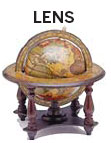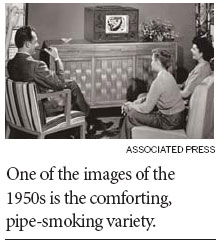'50s redux: Anxietyreturns
By Carlos Cunha (China Daily)
Updated: 2010-08-22 10:16
 |
Large Medium Small |
Do you find yourself waking up in the middle of the night, fretful, on the verge of panic? Welcome back to the 1950s - yet again.

The fun '50s of rock 'n' roll and streamlined convertibles. The pipe-smoking, sweater-vested '50s of conservative politics, mores and fashions. The footloose '50s of sloppy beatniks.
Now returns the darkest side of the '50s: that which led to its being dubbed the Age of Anxiety.
According to the Milbank Quarterly, a health policy journal based in New York, the emblematic mental health problem of the '50s, anxiety, has re-emerged with top billing in the 21st century.
There certainly are obvious reasons for anxiety today, foremost among them the precariousness of contemporary employment and how that threatens our status, security, comfort - and health. (The Times reported that people who were laid off suffered adverse health events.)
But at the existential root of our anxiety may be something we share with the '50s: loneliness, in particular what Ronald W. Dworkin, author of "Artificial Happiness: The Dark Side of the New Happy Class," calls interior loneliness, "the paradox of friendship without any real connection between people."
That such loneliness must be a problem once again, as the '10's get under way, is surely indicated by a trend reported in The Times: in some American and European cities, even those traditionally most solitary of people, night owls, have taken to assembling in cozy, convivial late-night work groups.

Some of us might prefer the more dubious solutions that the fed-up lonely crowds of the '50s came up with as their decade shaded into the '60s: the ways glamorized by the American TV series "Mad Men." In other words, loads of extramarital carousing with plenty of stiff cocktails.
Katie Roiphe in The Times suggested: that our age may be longing for some of the madness of "Mad Men." "These days, the careful anthropologist observes brief furtive forays into the world of excess in highly functional and orderly people," she writes.
Of course, we should not forget what the Mad Men's debonair dissoluteness led to. "The Age of Anxiety in the 1950s," writes Mr. Dworkin, "became the Age of Depression in the 1970s, '80s, and '90s."
The New York Times